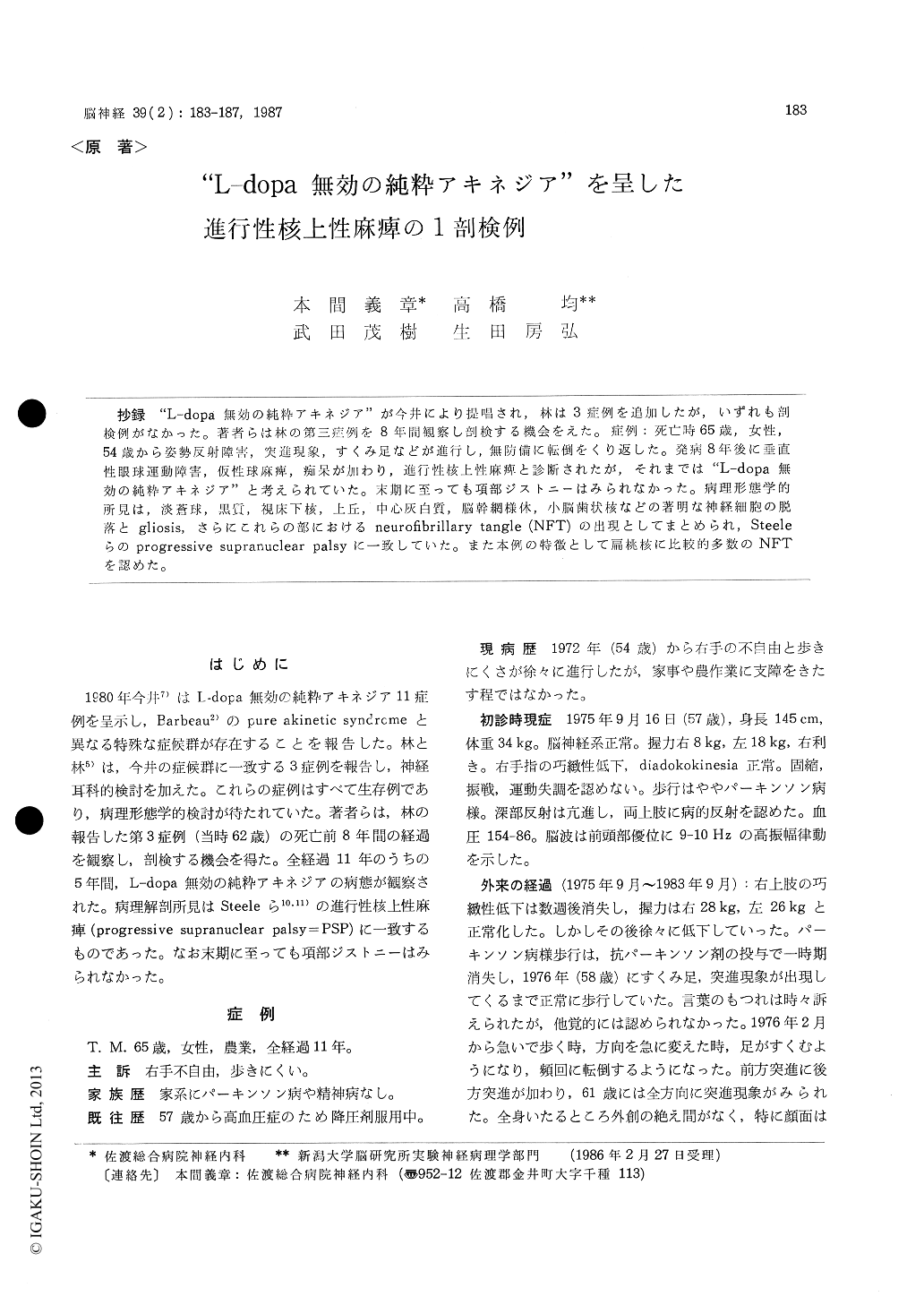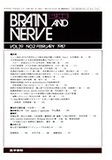Japanese
English
- 有料閲覧
- Abstract 文献概要
- 1ページ目 Look Inside
抄録 "L-dopa無効の純粋アキネジア"が今井により提唱され,林は3症例を追加したが,いずれも剖検例がなかった。著者らは林の第三症例を8年間観察し剖検する機会をえた。症例:死亡時65歳,女性,54歳から姿勢反射障害,突進現象,すくみ足などが進行し,無防備に転倒をくり返した。発病8年後に垂直性眼球運動障害,仮性球麻痺,痴呆が加わり,進行性核上性麻痺と診断されたが,それまでは"L-dopa無効の純粋アキネジア"と考えられていた。末期に至っても項部ジストニーはみられなかった。病理形態学的所見は,淡蒼球,黒質,視床下核,上丘,中心灰白質,脳幹網様体,小脳歯状核などの著明な神経細胞の脱落とgliosis,さらにこれらの部におけるneurofibrillary tangle (NFT)の出現としてまとめられ,Steeleらのprogressive supranuclear palsyに一致していた。また本例の特徴として扁桃核に比較的多数のNFTを認めた。
Eleven cases of "pure akinesia without rigidity and tremor and with no effect by L-dopa therapy" were first reported by Imai in 1980. Three cases were added by Hayashi and Hayashi (1983). However there have been so far no autopsy cases, remaining the nosological position of this synd-rome uncertain. The authors have had an oppor-tunity of observing the third case in the report by Hayashi and Hayashi for 8 years and autopsy was done as well.
Case report
The patient was a female farmer. On account of postural-reflex troubles, the pulsion phenome-non and feet freezing, which had progressed since the age of 54, she easily tumbled over. Eight years after the beginning of those symptoms, vertical oculomoter palsy, pseudobulbar palsy and dementia were added ; she was diagnosed as a progressive supranuclear palsy. Before this diag-nosis, her illness was being regarded as "pure akinesia withcut rigidity and tremor and with no effect by L-dopa therapy". Neck distonia was not observed even in the terminal stage. She died at the age of 65. The total clinical course was about 11 years.
Pathological observation
The brain weighed 1, 170 g before fixation. Mark-ed atrophy of the subthalamic nucleus, glubus pallidus and pontine tegmentum was observed. The substantia nigra was shown to be severely depigmented. Microscopically, loss of neurons and gliosis were seen in the subthalamic nucleus, globus pallidus, substantia nigra, hypothalamus, superior colliculus, central grey matter, brain stem reticular formation, cerebellar dentate nucleus, etc. The characteristic finding was the appearance of neurofibrillary tangles in these regions. The observation in the present case well correspond to those in progressive supranuclear palsy origi-nally described by Steel et al. (1964). Many neu-rofibrillary tangles were observed in the so-called limbic system including the amygdaloid nucleus of our case, which seems rare in progressive sup-ranuclear palsy.

Copyright © 1987, Igaku-Shoin Ltd. All rights reserved.


